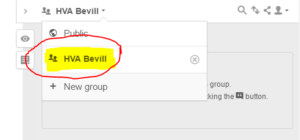Over the next few weeks, we’ll be reading through Othello and parts of other Shakespearean plays. One of the difficulties in reading Shakespeare is the language of the text. The best way to get over those difficulties is to engage directly with the text. With our previous readings, I’ve asked you to annotate with post-it notes of varying colors and sizes. For Shakespeare, I’m asking you to take a different approach (though the ol’ post-it notes may still come in handy).
We’ve been using hypothes.is this semester to annotate poetry on my blog, and we can use it just as well to annotate a digital edition of Othello.
Make sure that you’re signed up for Hypothes.is and have clicked the link to join my group.
From there, click the link at the top or bottom of the page for OTHELLO to be taken directly to the play. Use the links to go to any act or scene. Highlight any text to begin annotating.
When you annotate, make sure that you select HVA Bevill as your group—there is too much to this play for me to check for annotations under Public.

Requirement: 6 Annotations for Each Act
We’ll have at least some in-class computer time each week, but you should also be willing to do annotations at home. These will have to be more in-depth than your daily poetry annotations. Remember, annotations should add to our understanding of the play–be specific and be clear and thoughtful with your responses.
2 – Unfamiliar word definitions.
1 – Character or plot analysis based on a line of dialogue, at least 3 sentences in length. (Basically, highlight a line or a few lines and write about how they establish some key information on a character or part of the story).
1 – Multimedia comment (picture, video, meme, audio…make sure it is embedded, not just linked).
1 – Reply to another student’s multimedia comment or character analysis annotation.
1 – Reply to MY writing prompt (I will highlight the beginning of each Act).